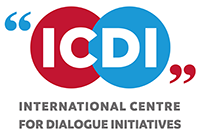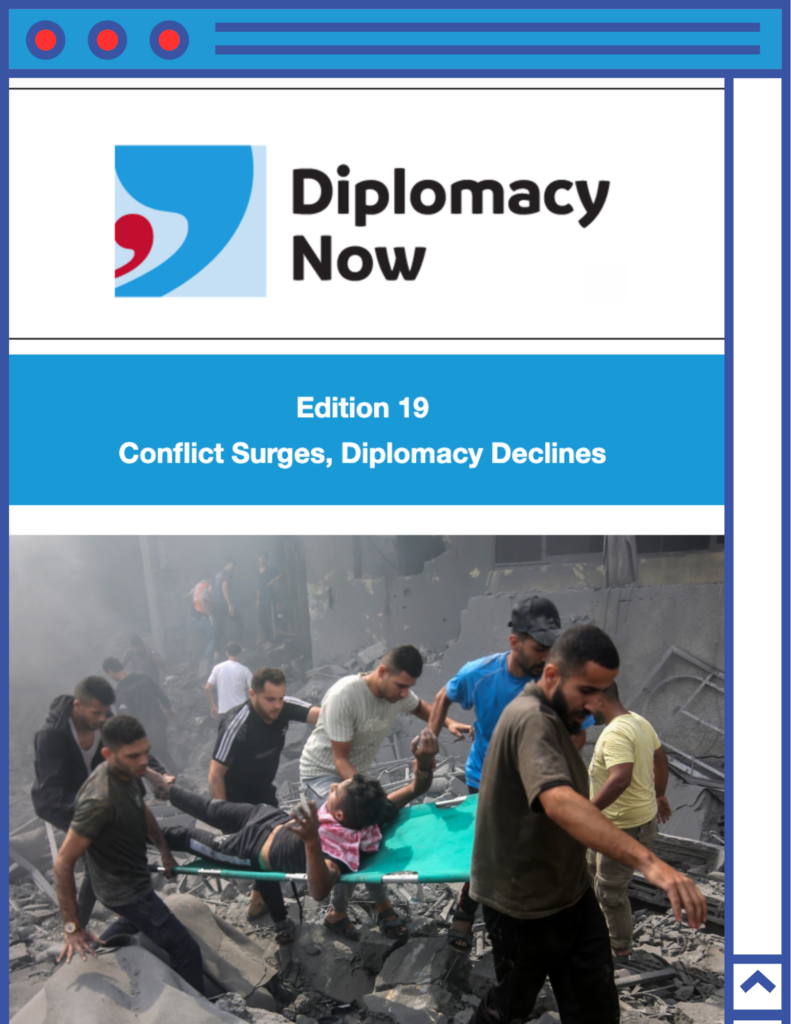*This piece is the second part to a piece published in Diplomacy Now’s edition on The Pact for the Future.
In an earlier essay, we asked whether the emerging pact for the future was an exercise in scattershot diplomacy or contained actionable items. The Pact, as adopted, has elements of hope, scattershot diplomacy, and potentially actionable items. This essay points to some actionable ideas that could be practical.
Four UN Pillars of the UN?
The Pact affirms three pillars of the United Nations – sustainable development, peace and security, and human rights. Conceptually, this needs to be updated. There should be an additional pillar “Survival and Protection of Humanity and its Habitat.” In seeking to identify actionable items we shall use these four categories.
Survival and Protection of Humanity and its Habitat
The Pact undertakes to protect everyone on Earth through universal coverage of multi-hazard early warning systems by 2027, including through the accelerated implementation of the Early Warning for All Initiative. The Security Council could hold an urgent debate on this issue and invite States, regional and international organizations to offer their advice.
The Pact commits to accelerating States Parties’ fulfillment of their obligations under the United Nations Framework Convention on Climate Change and the Paris Agreement. The Legal Committee of the UN General Assembly could urgently consider how to strengthen compliance with the convention.
The Pact envisages a transformation in global governance, something it considered essential to ensure that the positive progress seen across all three pillars of the work of the UN in recent decades does not unravel. The Pact also commits to making the multilateral system “Just, democratic, equitable and representative of today’s world…” The General Assembly should give urgent consideration to how this could be achieved. This is an issue touching on the moral integrity of the UN.
As a follow-up to the Declaration on Future Generations, the Summit decided to convene, in 2025, a high-level plenary meeting of the General Assembly on future generations, to review the implementation of the Declaration. It requested the Secretary-General to present a report on the implementation of the Declaration. The Secretary-General should request national reports from UN Member States on steps they have taken to implement the Declaration and could base his report to the General Assembly on the national reports.
The Global Digital Compact commits to the establishment of appropriate safeguards to prevent and address any adverse impact on human rights arising from the use of digital and emerging technologies and to protect individuals against violations and abuses of their human rights in the digital space, including through human rights due diligence and establishing effective oversight and remedy mechanisms. The UN Human Rights Council should request its Advisory Body to draft such safeguards urgently and to present them to the Council for consideration and adoption.
The Digital Compact recognized the role of the Commission on Science and Technology for Development and requested it to consider how it could contribute to the implementation of the Compact. The Secretariat could prepare a discussion paper for urgent consideration by the Commission on Science and Technology.
The Secretary-General was requested to track and monitor progress in the implementation of the Digital Compact and to provide a ‘Compact implementation map’ for the consideration of Governments and stakeholders. The map could be provided every six months.
The Pact committed to strengthening international cooperation for the exploration and use of outer space for peaceful purposes and for the benefit of all humanity. The Committee on the Peaceful Uses of Outer Space could convene on this issue urgently and provide its recommendations.
Sustainable Development
The Pact reaffirms that the 2030 Agenda for Sustainable Development is the overarching road map for achieving sustainable development and recognizes that eradicating poverty in all its forms and dimensions, including extreme poverty, is the greatest global challenge and an indispensable requirement for sustainable development. The Development Committee of the General Assembly could draw up an action plan for the eradication of poverty in all its forms and dimensions.
The Pact calls for action to address and promote the prevention of water scarcity. UNEP could launch an initiative on this urgently.
The Pact calls for the promotion of export-led growth in developing countries through, inter alia, preferential trade access for developing countries. UNCTAD could launch a round of negotiations for such preferential trade access for developing countries.
The Pact undertakes to strengthen efforts to build peaceful, just and inclusive societies for sustainable development, provide access to justice for all and build effective, accountable and inclusive institutions at all levels and uphold human rights and fundamental freedoms. The UN Human Rights Council could advise urgently how to strengthen these efforts.
The Pact recognized the importance of UN engagement with national parliaments and relevant stakeholders, while preserving the intergovernmental character of the Organization. It requested the Secretary-General to provide recommendations on how engagement with local and regional authorities could advance the 2030 Agenda, particularly the localization of the SDGs, by the end of the 79th session for Member States consideration. The Inter-Parliamentary Union could be approached for its advice on these matters.
Peace and Security
The Pact recognizes the interdependence of international peace and security, sustainable development and human rights, and reaffirms the importance of the rule of law at international and national levels. The General Assembly could convene an urgent debate on strengthening the rule of law at international and national levels.
The Pact reaffirms commitment to preventive diplomacy, the peaceful settlement of disputes and the importance of dialogue between States. It recommends the role of the UN in preventive diplomacy and the peaceful settlement of disputes. The Secretary-General could present the Security Council with proposals for the establishment of additional regional and sub-regional centers for preventive diplomacy. There are now four such centers.
The Pact decides to develop and implement mechanisms for the pacific settlement of disputes, confidence-building, early warning and crisis management, at the subregional, regional and international levels to address new and emerging threats to international peace and security. It urges the Secretary-General to actively use her/his good offices and to ensure that the United Nations is adequately equipped to lead and support mediation and preventive diplomacy. It encourages the Secretary-General to bring to the attention of the Security Council any matter that may threaten the maintenance of international peace and security.
The Pact noted the Secretary-General’s Agenda for Peace. The Secretary-General could present to the General Assembly proposals for strengthening the Secretariat in these areas.
The Pact commits to adapting UN peace operations to better respond to existing challenges and new realities. It requested the Secretary-General to undertake a review of the future of all forms of United Nations peace operations. The Secretary-General should urgently establish a Panel of Advisers on the future of UN peace operations.
The Pact commits to strengthening the response of the Security Council for the maintenance of international peace and security and its relationship with the General Assembly. The Pact also called for the enhancement of ways in which the General Assembly could contribute to the maintenance of international peace and security, in particular by taking action in accordance with the Charter of the UN. The Pact affirmed commitment to strengthening the Peacebuilding Commission. The Panel of Advisers on the future of UN peace operations could offer its recommendations on these issues.
Human Rights.
The Pact reaffirms the Universal Declaration of Human Rights and the fundamental freedoms enshrined therein. It commits to respect, protect, promote and fulfill all human rights, recognizing their universality, indivisibility, interdependence and interrelatedness, and to be “unequivocal in what we stand for and uphold”: freedom from fear and freedom from want for all. The UN Human Rights Council could draw up a plan of action to achieve this.
The Pact reaffirms commitment to the Beijing Declaration and Platform for Action, and to accelerating efforts to achieve gender equality, women’s participation and the empowerment of all women and girls in all domains and to eliminating all forms of discrimination and violence against women and girls. The Commission on the Status of Women could draw up a plan of action to achieve this.
In similar vein, the Pact commits to urgently removing all legal, social and economic barriers to achieve gender equality and ensure women’s full and effective participation and equal opportunities for leadership at all levels of decision-making in political, economic and public life. It also pledges to take targeted action to eradicate all forms of violence and harassment against all women and girls, including sexual and gender-based violence. The High Commissioner for Human Rights and UN Women could advise on urgent measures to be taken to achieve these goals.
The Pact commits to ensuring that science, technology and innovation contribute to the full enjoyment of human rights by all. The Advisory Body of the Human Rights Council could be requested for its urgent advice on this matter.
The Pact commits to ensuring the effective enjoyment by all of all human rights and to respond to new and emerging challenges. The Human Rights Council could empanel a High-Level Group of Experts to advise it on these matters.
The Pact requested the Secretary-General to assess the need for adequate, predictable, increased and sustainable financing of the United Nations human rights mechanisms, including the Office of the UN High Commissioner for Human Rights. The Secretary-General, based on the advice of the High Commissioner, should submit concrete strengthening proposals to the General Assembly for its approval.
The Pact commits to promoting, protecting and respecting the human rights of all young people and to foster social inclusion and integration. The UN regional economic and social commissions could convene regional meetings of young people and invite them to consider how they could contribute to this effort.
Conclusion
The Pact could go the route of previous lofty declarations destined to take their place on the bookshelves. Or efforts could be made to implement some of its recommendations practically. We have suggested some items for action above. Naturally, there could be other items for action. We have selected items that seem achievable.
Dr Bertrand Ramcharan has served many roles at the United Nations. He was a former Chief Speech-Writer for the UN Secretary-General, Director in the UN Political Department; Director of the International Conference on the Former Yugoslavia; Deputy and then Acting UN High Commissioner for Human Rights; and Special Adviser to the UN Secretary-General on the peace process in Georgia. He is the author of Preventive Diplomacy at the UN and Contemporary Preventive Diplomacy.




